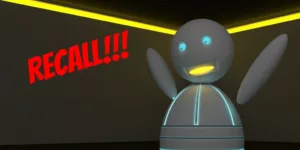A product recall is one of the biggest nightmares manufacturers face. Many large companies have seen product recalls over the years, but it’s the efficiency in which they respond to those recalls that separate a mountain from a relative mole hill. Doing everything possible to avoid a recall comes at the front end of product development but there are some things that simply cannot be predicted. Product recalls happen – and it’s something that all businesses, regardless of size, should be prepared to address.
The press associated with the recall is tough to take, though traditionally has been the best way to notify customers of the product defect. Press releases and news stories about large recalls certainly inform, but do so in a blanketed-information way. There’s no guarantee that the people who truly need to see the message will, and there are many more others who see it, even if they don’t need the information.
All of that is changing with advances in recall technology. Streamlining the process – from initial notification to closing out the recall – is easier with advancements in recall technology. This is making it easier for manufacturers to reach customers and complete recall checklists faster.
Here are a few areas of the recall process that are seeing vast improvement through tech company management.
Centralized Systems
There’s no reason for a recall to reinvent the wheel when it comes to a customer database. Most businesses have robust customer relationship management platforms with details on purchases, contact information, and more. By tapping into those systems that are already in place, a recall plan can be deployed that takes specific customers into account. With the right setup, it’s as easy as clicking a few buttons to notify the right people. The method of notification can also be chosen – whether it’s email, text, postal mail, phone call, or all the above.
Vendor Management
Contacting customers is just part of the recall process. Communication between suppliers and other vendors is also vital to ensuring the recall goes smoothly. Having a recall hub created in advance for this purpose is advised so there is less scrambling, should a recall be necessary. A vendor management system that is detailed and customized based on the manufacturer is pivotal to the success of the relationship – and also the deployment of the recall.
Real-Time Analytics
Sending out a recall message and hoping for a good response is not just irresponsible – it’s unnecessary with the technology that is now available. Manufacturers can see exactly how customers are responding to recall notices with email and SMS tracking systems. These real-time analytics can help mold the next steps in the recall communication plan. If there is an online form for the recall, manufacturers can see exactly which customers are responding and who may need another reminder, or different delivery method.
Technology is making the headache of recalls a little more manageable. With a proactive approach that taps the best of cutting-edge communication and workflow management, recalls are more targeted and effective than ever.








